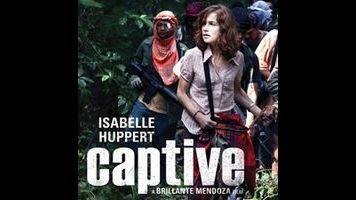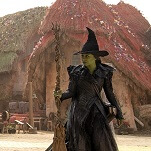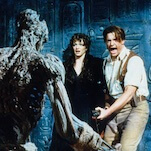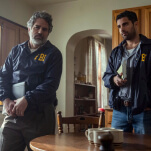Six or seven years ago, if you asked just about anyone who followed the film festival scene to name the next big movie culture hot spot, chances are good they’d point to the Philippines. Here was a country with a complicated, under-examined history and a commercial film industry large enough to be rebelled against—the stuff New Waves are made of—and it was producing smart critics and unique, prolific filmmakers. And if you asked these same people which Pinoy talent would be the first to bust out of the festival sidebar and into American arthouses, they’d probably single out Brillante Mendoza.
Cannes ’09 was supposed to be the flash point for the great Filipino crossover. Art-damaged Raya Martin had a film in the Un Certain Regard section, plus a collaboration with the even more prolific Adolfo Alix Jr. playing as a special screening, and Mendoza—in the main slate for the second year in a row—went home with the Best Director prize for the murky, queasy Kinatay. And then, not much happened, at least from the perspective of American moviegoers. Kinatay never found a U.S. distributor and neither did Mendoza’s next film, Lola, also known as Grandmother. Captive—the movie many assumed would be his Western breakthrough, with Isabelle Huppert in the lead—never even played an American festival. Now, three years after premiering at Berlin, it’s sneaking out on DVD as the first Mendoza movie to get a physical Stateside release.
Captive is Mendoza’s take on the Dos Palmas kidnappings, the 2001 incident where 20 locals and foreigners were abducted by Islamist militants and held hostage for a year. It’s not much of a spoiler to say that the film opens the moment that the hostages are taken and ends with a freeze-frame just as they’re being rescued; the subject is in the title—the experience of being a hostage—and what happens before or after doesn’t really matter.
Besides being stingy with context, Mendoza keeps viewer identification to a minimum, a tactic that worked better in Kinatay, but here comes across as flat and affectless. Packed with date-and-location stamps and shot and cut in a squashed, unvarnished handheld style that makes everything look the same, it’s a movie of people being continually herded from one place to another, ducking tree branches and occasional gunfire, and being treated by their captors like human cattle. For most of the movie, Huppert—who plays a fictional French missionary social worker named Thérèse Bourgoine—functions as little more than another member of a wildly uneven ensemble cast. The narrative moves point by point: a hostage dying and being buried, another being forced into a marriage with one of the captors, a clunky sequence of the group learning about the 9/11 attacks over the radio. One day they’re pulling leeches off their legs and arms and being stung by hornets, another they learn that a member of the group has been abruptly beheaded to prove a point to negotiators. Ordeals have a way of becoming monotonous.
Despite his reputation for confrontational edginess (Captive includes, among other things, a graphic birth intercut with a chaotic firefight), Mendoza has a sensitive side and a fondness for maternal figures, represented first by Thérèse’s elderly Filipina colleague Soledad (Rustica Carpio) and later by Thérèse herself. His best films—like the aforementioned Lola—are essentially melodramas, mixing sap and seediness. No surprise, then, that Captive only comes to life in scenes where it briefly dips into the melodramatic, creating brief flashes of contrast between cruelty and kindness. It’s in these moments that Mendoza’s long, forced march through the forest finds a sense of purpose, however sentimental.
Captive is now available on DVD from First Run Features.








































